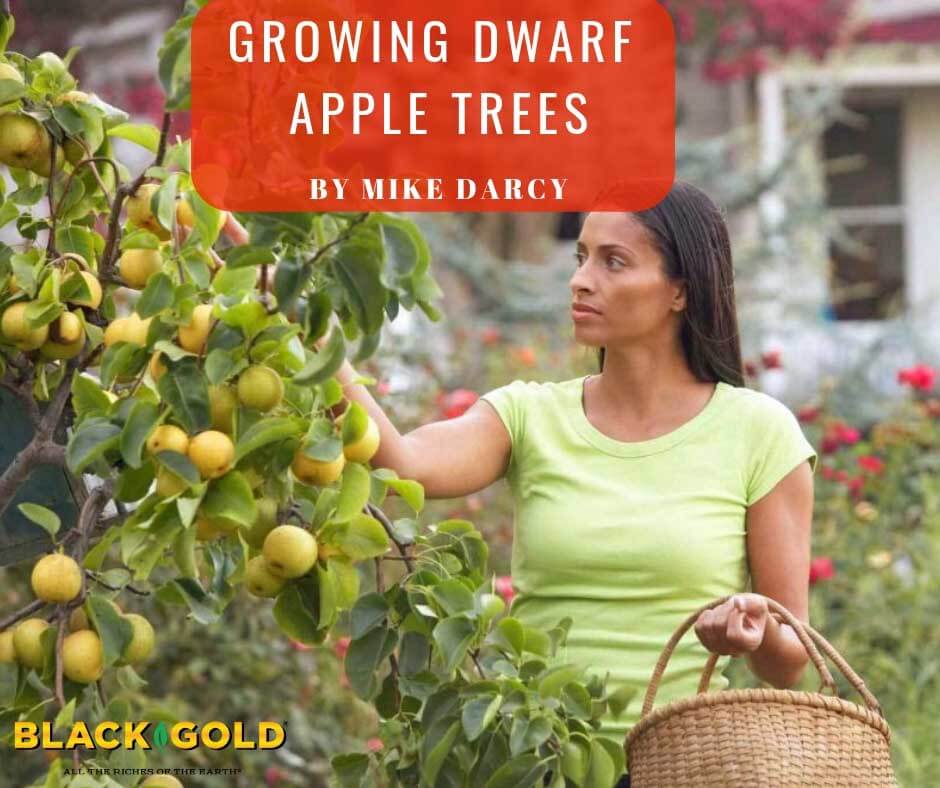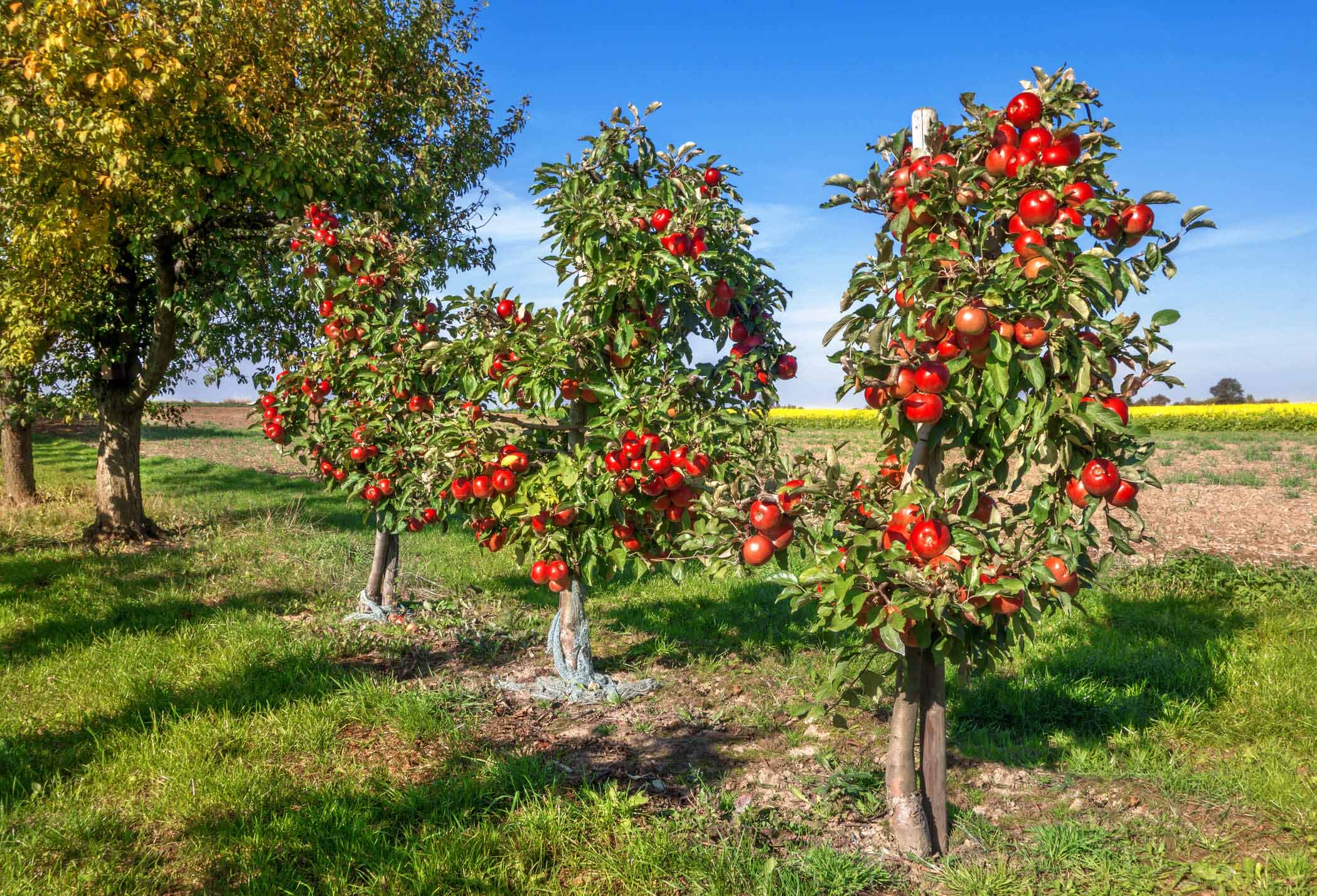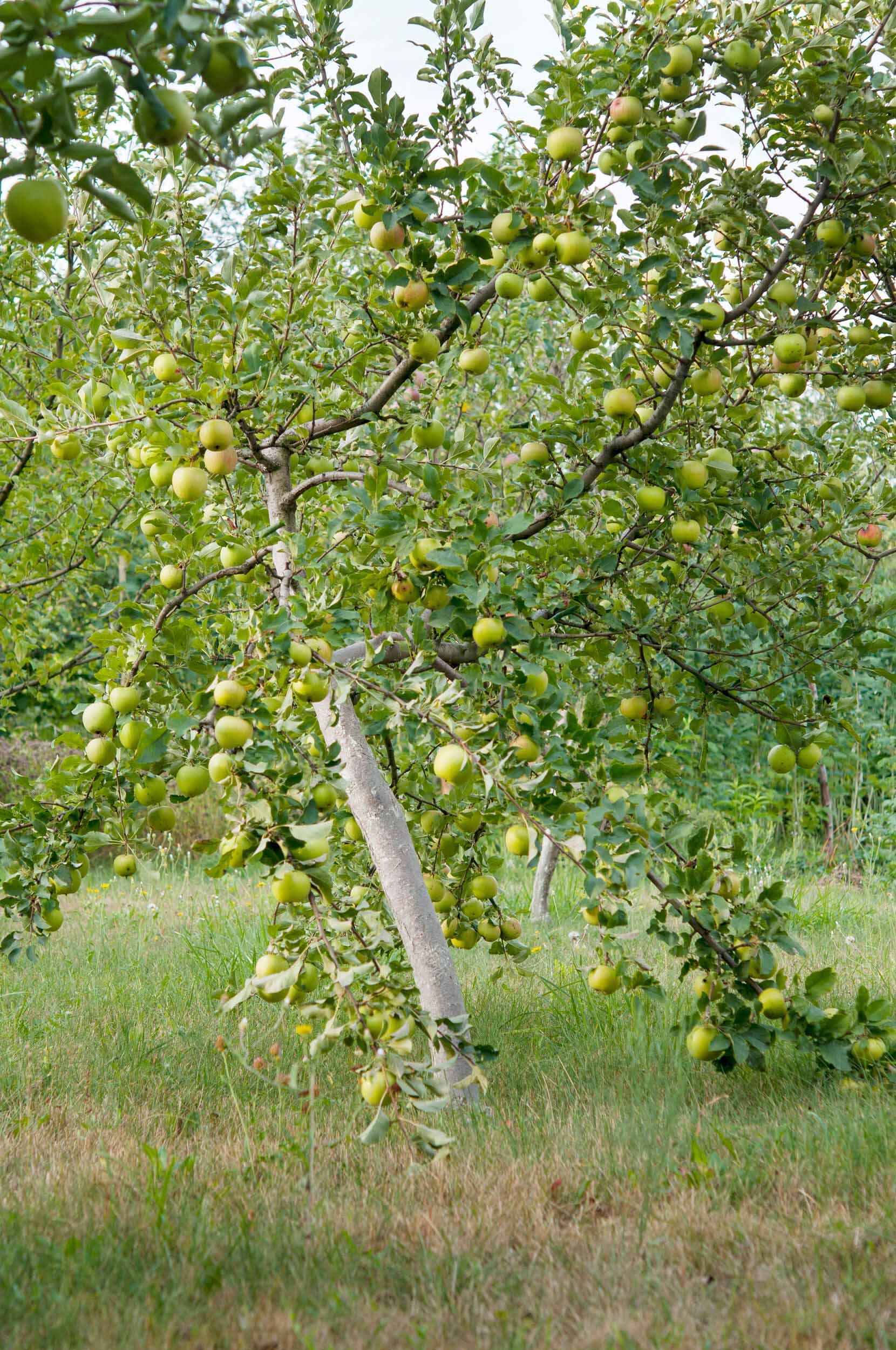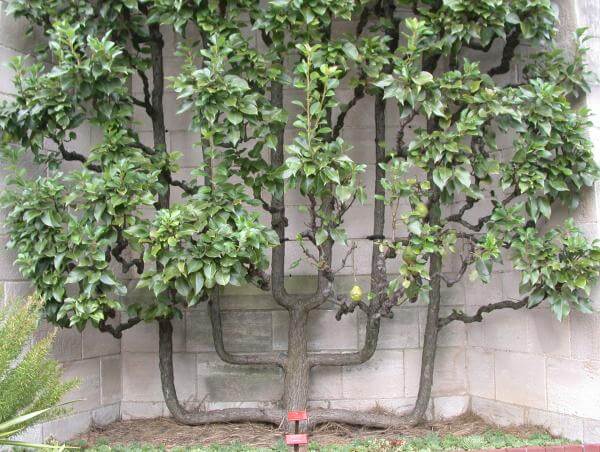
Walking out on your deck, balcony, or patio and being able to pick fresh apples off your own tree may be a dream to most gardeners. In the world of today, we often have small lots, which means less available space for a standard-sized fruit tree. Even if we did have space, there may be other competing factors to prevent an apple tree from flourishing, such as shade from a neighboring house or a mature tree casting shade and expansive roots, competing for sun, water, and nutrients. For many urban and small-space gardeners, dwarf apple trees (Malus domestica) is the solution, and fall is the best time to plant them.
Even with limited space, dwarf fruit trees can grow and thrive, if provided good ground. These small trees will even grow well in large containers, so they can be grown on a sturdy balcony or small patio if given adequate sunlight and good care.
What Makes Dwarf Apples Dwarf?
Garden centers sell our favorite apple varieties, like ‘Honeycrisp’, ‘Fuji’, or ‘Red Delicious’, as very very dwarf (5-7′ tall), dwarf (6-10 feet tall), or semi-dwarf (8-12 feet tall). The fact is, any apple variety can be in compact form if it is grafted onto dwarfing rootstock. So, what is grafting and how does it work?

Every commercial apple you buy is actually two apple varieties grafted or joined together; one variety is the main tree (scion) while the second variety is the rootstock. The scion of a dwarf tree is grafted onto dwarfing rootstock, so it’s the rootstock that controls tree size, among other factors such as disease resistance, hardiness, and vigor. (Learn all about the grafting process here.)
It is unfortunate that plant labels on apple trees don’t tell the whole story. It is as important to know what the rootstock variety is and the scion variety because the rootstock determines how a tree will grow. There are many different apple rootstocks. For example, G65 is one of the most dwarfing varieties, producing trees reaching about 4-7 feet. The next size up would be a rootstock called M9, producing trees reaching about 6-10 feet. (Learn all about dwarfing rootstocks here.)
The Best Dwarf Apple Trees

For apple trees in general, all need to be cross-pollinated, which requires two trees to be planted in close proximity to each other. Apples can be early-, early-mid-, mid-, mid-late-, or late-blooming, so you need to choose at least two trees that bloom at the same time for cross-pollination. Apples are primarily honeybee pollinated, so it also helps to plant other garden flowers and shrubs for honeybees, to make sure there are lots of pollinators in your garden to help your apples. (To learn more about flower gardening for bees click here. To learn more about trees for bees click here.)
‘Golden Delicious’ is a great eating apple and popular pollenizing tree for other mid-season varieties, like ‘Jonagold’ or ‘Gala’. Likewise, the mid-late-blooming ‘Honeycrisp’ will pollenize other mid-late-bloomers, like ‘Granny Smith’. Just choose the apples you like best, whether they be for fresh eating, cooking, or cider, and be sure their bloom is coordinated for best production. (For a full list of apple pollenizers, click here.)
Growing Dwarf Apple Trees
Dwarf apple trees are ideal for growing in large containers that are at least 10-15 gallons. If planting in a container, fill the pot with one part Black Gold Natural & Organic Potting Mix mixed with one part Black Gold Garden Soil. If planting in the ground, good drainage and good soil quality are essential. Amend the soil with Black Gold Garden Soil before planting to increase organic matter. A yearly top dressing of Black Gold Garden Compost Blend is ideal for trees in containers or in the ground. When placing your trees, remember that the critical factor is the sun; these trees should have daylong direct sunlight.

Gardeners with very little space should look for apples that are espaliered for training against a fence, trellis, or wall. Espaliered trees require harsher pruning if they are to be maintained in their attractive architectural form, but they are space saving.
Yearly pruning in late winter will also help standard dwarf apples. Remove crossing or unwieldy stems as well as unwanted water sprouts that may arise from the rootstock. Another important step to winter care is spraying trees with dormant oil spray to control common pests, like whitefly, mealybugs, mites, and aphids. Spray before your trees have leafed out and when temperatures are below 40ºF.
Check out your local garden center in fall because if they have dwarf fruit trees, it is likely they will be on sale. If they are not available now, spring would offer a better selection. You might be pleasantly surprised at how easy it is to have fresh apples to pick from your own trees.

